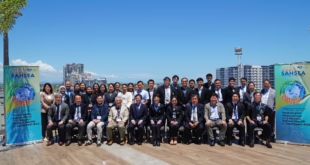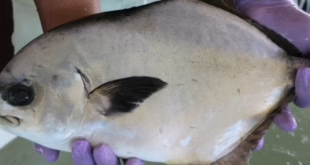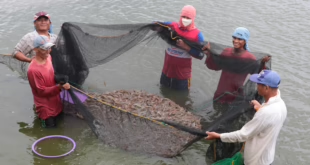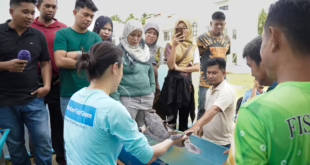Good aquaculture practices (GAPs) mean production of safe aquaculture products for human consumption. This is the consensus of 17 experts from SEAFDEC member countries who attended the International seminar on food safety in aquaculture in Southeast Asia on 22 January in Iloilo, Philippines. The seminar was hosted by SEAFDEC Aquaculture Department (AQD) and funded by the Government of Japan Trust Fund (GOJ-TF), and was intended to share new information on food safety in Southeast Asia.
Food safety has become an important issue because most of the food fish that people are eating already comes from aquaculture; according to FAO, 43% of the world’s fish supply in 2008 is from aquaculture. Under fish culture conditions and without GAPs microbiological contaminants, antibiotic residues, chemical contaminants, and parasites can become problems.
GAPs is an integrated approach to fishfarming that includes, among others, appropriate fish health management and effluent management practices that would no longer necessitate the use of antibiotics and other harmful products.
At AQD, studies on food safety are funded by GOJ-TF and AQD, including (1) the determination of withdrawal periods of antibiotics in shrimps, milkfish and other freshwater fish species; (2) the surveillance of chemical contaminants in aquaculture products like feeds as well as chemical residues in aquaculture systems and cultured fish; (3) investigation of the situation of antibiotics/chemicals usage and regulations in aquaculture; and (4) establishment of guidelines on the proper usage of antibiotic and chemicals in aquaculture.
AQD’s laboratory and research facilities are capable of conducting microbiological, chemical, and PCR-based analyses used in monitoring food safety. AQD’s analytical procedures and protocols are verifiable by third-parties; in particular, AQD has passed the Inter-Laboratory Calibration Test (ring test) for the detection of shrimp viruses conducted by the World Organization for Animal Health (OIE) through the University of Arizona (USA).
Governments in Southeast Asia have taken measures to ensure food safety to protect its public. Thailand and the Philippines, for example, are monitoring residues of harmful substances in fish and inspecting aquafarms. Farms that passed the set standards for GAPs are certified as safe sources of food fish.
Participants included representatives from Cambodia (1), Malaysia (1), Myanmar (1), Thailand (2), Singapore (3), and the Philippines (10) and 30 AQD researchers and staff.
The seminar was organized by Dr. RM Coloso (chair), Dr. M Catacutan, Ms. M Arnaiz, Ms. KG Corre (members), and Dr. Azuma (adviser).




 SEAFDEC/AQD Southeast Asian Fisheries Development Center | Aquaculture Department
SEAFDEC/AQD Southeast Asian Fisheries Development Center | Aquaculture Department



